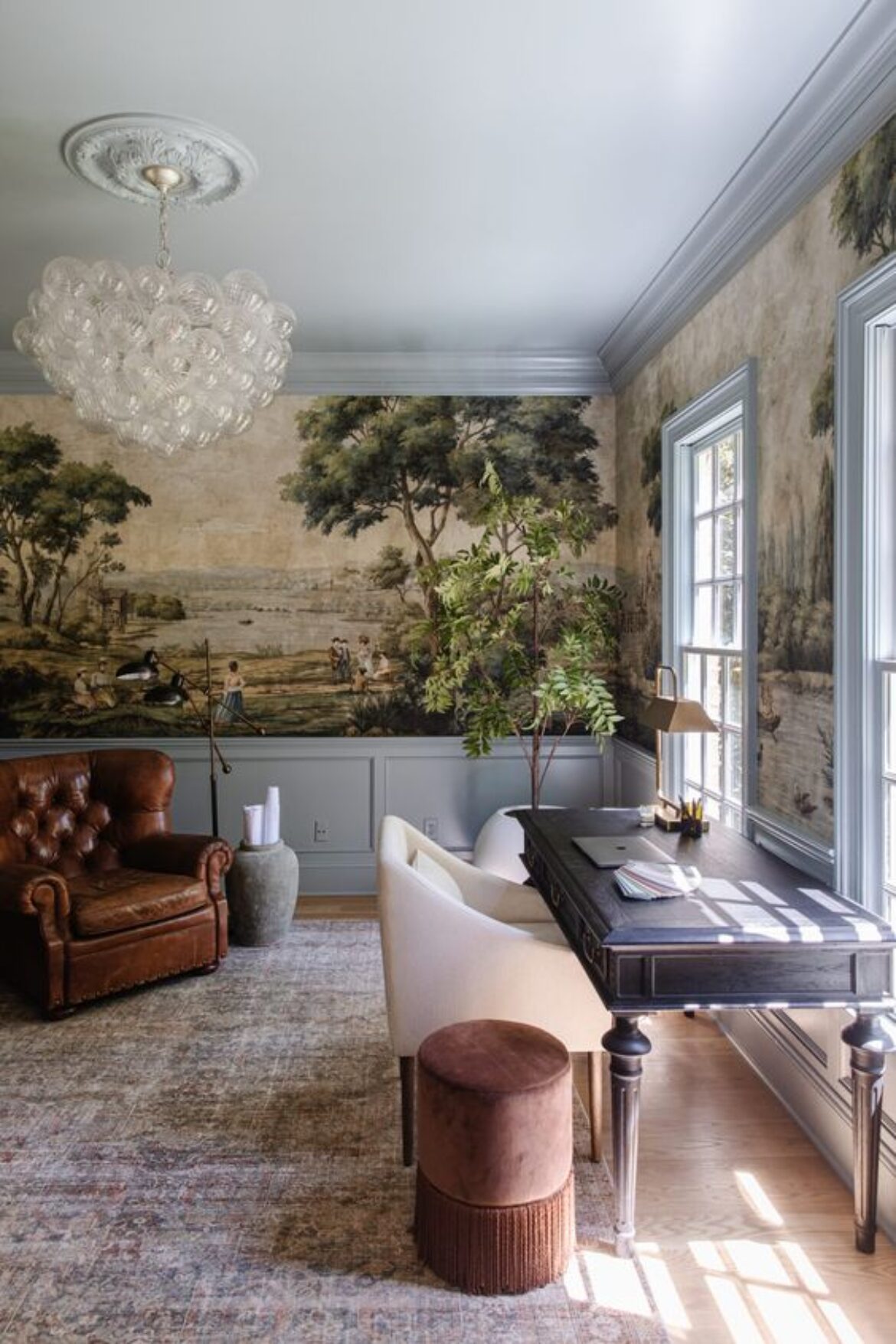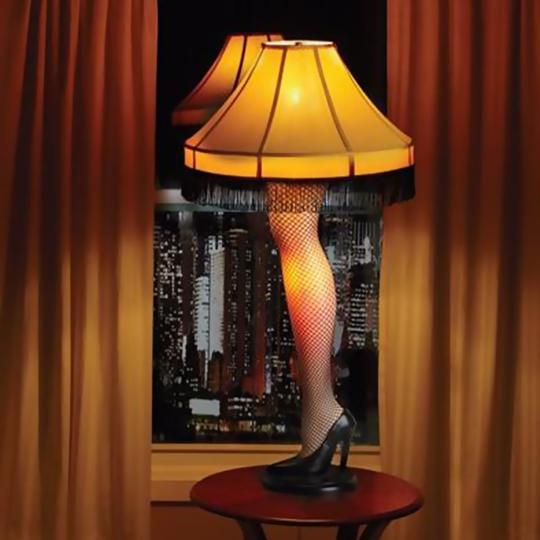Wallpaper is back and better than ever! As one of our favorite materials, we are thrilled about its exuberant return to the forefront of the interior design world.
Wallpaper is one of the manifestations of design creativity; it has come a long way over the decades, with fresh new designs and uses. We’re not only finding a shift from minimalist to more layered spaces on social media, but we are also seeing more beautiful wallcoverings in hit TV shows and movies, like Emma, Bridgerton, The Goldfinch, and The Queen’s Gambit, that leave a lasting impression. (1)
But before wallpapering every room, lets learn more about this single most transformative element in our design arsenal – its history, materials, applications and creative uses.
History (2)
Wallpaper has been around for centuries, with roots tracing back to the ancient Chinese, who are said to have pasted rice paper onto walls as far back as the Qin dynasty. It was used as a form of decoration in palaces and homes, and eventually made its way to Europe in the 16th century. By the 19th century, wallpaper was becoming increasingly popular due to advancements in printing technology, which allowed wallpaper to be mass-produced and accessible to a larger audience.
Types (3)
Generally, there are three “types” of wallpapers, categorized by their method of installation.
Non-Pasted: This wallpaper does not come prepared with adhesive so you’ll need to use paste to apply it to your wall. Though the pasting process can be messy and particular, it tends to produce the most long-lasting results.
Pre-Pasted: Just add water and this wallpaper is ready for application. No messy paste required. Though quick and easy, this application style unfortunately doesn’t last as long as the others.
Self-Adhesive: Also called peel and stick wallpaper, self-adhesive wallpaper acts like a sticker; just peel off the backing and apply it to the wall. If you redecorate often, it’s easy to remove and replace.
Materials (3)
There are so many different materials used in today’s wallpaper collections. Certain materials are better suited for particular spaces and uses. For example, wet spaces (baths and kitchens) and high traffic areas require different wallpaper specs than those in low traffic areas and ceilings.
Vinyl
- The most common type of wallpaper because it is easy to hang and remove, is very versatile.
- Made from PVD – makes it durable.
- Location: Smart choice for kids’ rooms, baths (damp areas), kitchens and high traffic areas.
- Comes in a number of styles including pre-pasted, peel and stick and textured.
- Can be cleaned with a damp sponge.
Paper
- Colors show up beautifully on paper wallpaper but beware of scratching and tearing as this material is the most delicate.
- Location: Low Traffic Areas.
Fabric
- The highest quality wallpaper.
- Does not come pre-pasted.
- Be extra careful about smoothing out air bubbles when applying, so the fabric does not wrinkle.
- Location: Low Traffic Areas.
Grass Cloth
- Made from natural fibers including grass cloth, hemp, sisal, cork, triangle grass, raw jute, reed, or arrowroot.
- Does not require matching, which makes hanging easier.
- Requires dusting.
- Location: Headboard or Focal Wall – Poor choice for high-traffic areas such as hallways.
Flock
- Also known as embossed.
- Flock refers to the material that was used to manufacture it – leftover fuzz from the woolen cloth industry and it was supposed to imitate crushed velvet (today it is made from polyester, nylon or rayon combined with an adhesive).
- Install with a paste the wall method – any glue on the surface will ruin the flocking – so allow the adhesive to tack-up before hanging the panel.
- Location: Best for rooms with low-traffic.
Paintable
- Heavy vinyl paper that can be painted.
- Adds wall texture.
- Multiple paste options.
- Requires 36hr wait after applying before painting.
- Location: Use on a whole wall or just as a backsplash in the kitchen.
Murals
- Statement wall idea.
- We recommend choosing peel and stick wallpaper.
- Location: Make sure that there are no doors or windows in the middle of the mural that will affect the pattern/design.
Wood Look
- Budget-friendly alternative to buying real wood.
- Hard to find, the wood veneer is prone to scratching.
- Brings warmth and coziness for a relaxing oasis.
Cork
- 100% natural alternative – made from cork oak bark, a sustainable source.
- Variety of colors, designs and textures that complement most décor settings.
- Location: Anywhere you want to add a distinct sophisticated appeal.
Metallic
- Make a statement with a bang.
- Balance between shine and dull is an instant contrast.
- Location: Create your own unique feature wall.
Buying Wallpaper (3)
It’s always best to confirm the quantity of wallpaper needed with your installer prior to placing any orders. Wallpaper pattern and material affect the number of rolls needed, in addition to window and door framing/trim.
- Measure the height and length of each wall to determine the square footage.
- Note the square footage on each roll of the paper you have selected and use these numbers to determine how many rolls you should buy.
- Often, wallpaper is priced by “single rolls,” which tend to cover between 28 and 32 sq. ft., but can also be sold by “double rolls,” which cover between 56 and 64 sq. ft.
Wallpaper comes in batches. There is no guarantee that wallpaper from two batches will be the same color. You should always buy extra from the same batch for mishaps and repairs!
Applications (4)
Wallpaper can be used in numerous spaces throughout the home. But consideration for where, who, and how must be taken into account. If it is a high-traffic area, make sure it can endure the activity and be cleaned. If it is being used by children, is it responsive to soap and water to remove drawings and love notes? And if it is in a bathroom or kitchen, can it take certain levels of moisture? The rest is just aesthetics.
Bathroom
- Vinyl is the most durable material for a bathroom.
- The powder room is a great spot for wallpaper since you will not have moisture from the shower.
- Consider leaving it out of a kid’s bath, since splashing is a guarantee.
- Water can cause warping and moisture damage over time.
Wallpaper in the shower!?
- Yes! Wall & Deco designed Vinyl-coated waterproof wallpapers specifically for showers.
- Many celebrities are wowing their guests with wallpaper in the shower. Would you try it in your home?
Kitchen
- Many people avoid wallpaper in the kitchen for fear of the smells, splashes, and humid atmosphere. But with wallpaper technology and design advancing constantly, wallpaper has become so much more durable.
- Vinyl Wallpaper is the best material.
Pantry
Adding wallpaper to your pantry shelves is a terrific way to spice up your space.
Laundry Room
Make yourself smile while doing laundry! Add your favorite colors and patterns to the space we all dread going.
Ceiling
- Would you wallpaper the ceilings of your home?
- Create a new bold look in your home.
- Don’t forget to design the “5th wall.”
Be Creative
- Frame pieces of wallpaper as art.
- Install wallpaper as an accent to your stairs.
- Apply around a fireplace for a dramatic look.
- Add color and pattern in a book shelf or niche
- Accent a small space – like a small work area under the stairs.
- Highlight the end of a hallway.
- Hang it above wainscotting to bring in a subtle pattern.
For assistance creatively incorporating wallpaper into your home, contact Talie Jane Interiors at 855-TALIE JANE (855-825-4352).
Article by the Talie Jane Interiors team.
Sources
a. The surprising story of wallpaper – BBC Culture
b. The Wallpaper Revival – Best In American Living
c. V&A · A Brief History Of Wallpaper (vam.ac.uk)
d. Old Wallpaper vs. New Wallpaper | The Paper Mill | Milton & King Blog (miltonandking.com)
f. How Wallpaper is Made: History, Raw Materials, Design & Manufacturing (highly-decorated.co.uk)
3. Types, Materials, Buying Wallpaper
a. Everything You Need to Know about Wallpaper Types | Wayfair
c. 41 Different Types Of Wallpaper Options – Architecture Lab
4. Applications
b. https://www.southernliving.com/home/bathroom/bathroom-wallpaper-ideas
c. https://www.architecturaldigest.com/story/bathroom-wallpaper-how-to-install-it-dos-and-donts
d. https://annikareed.com/blogs/news/why-you-should-add-wallpaper-to-your-kitchen
e. https://www.stlmag.com/design/how-to-best-use-wallpaper/
g. https://www.domino.com/content/wallpaper-on-the-ceiling/
h. https://www.pinterest.com/pin/566186984415451521/
i. https://www.pinterest.com/pin/61994932361169502/
j. https://www.pinterest.com/pin/391461392612400326/
k. https://www.pinterest.com/pin/36802921946283073/
l. https://www.pinterest.com/pin/18084835995632887/
m. https://www.pinterest.com/pin/5066618321302618/
n. https://www.pinterest.com/pin/48624870969590636/
o. https://www.pinterest.com/pin/8725793021541961/
p. https://www.pinterest.com/pin/821062575830725298/
q. https://www.pinterest.com/pin/197595502395249360/
s. Can You Wallpaper A Bathroom? | Everything Explained (thebathroomblueprint.com)
t. 30 Ceiling Wallpaper Ideas That Will Elevate Any Interior (thespruce.com)
Images
Pinterest, Cowtan & Tout, Grahm & Brown, Phillip Jeffries, Koroseal, https://www.theparisreview.org/blog/2018/05/02/scheeles-green-the-color-of-fake-foliage-and-death/





























Sorry, the comment form is closed at this time.